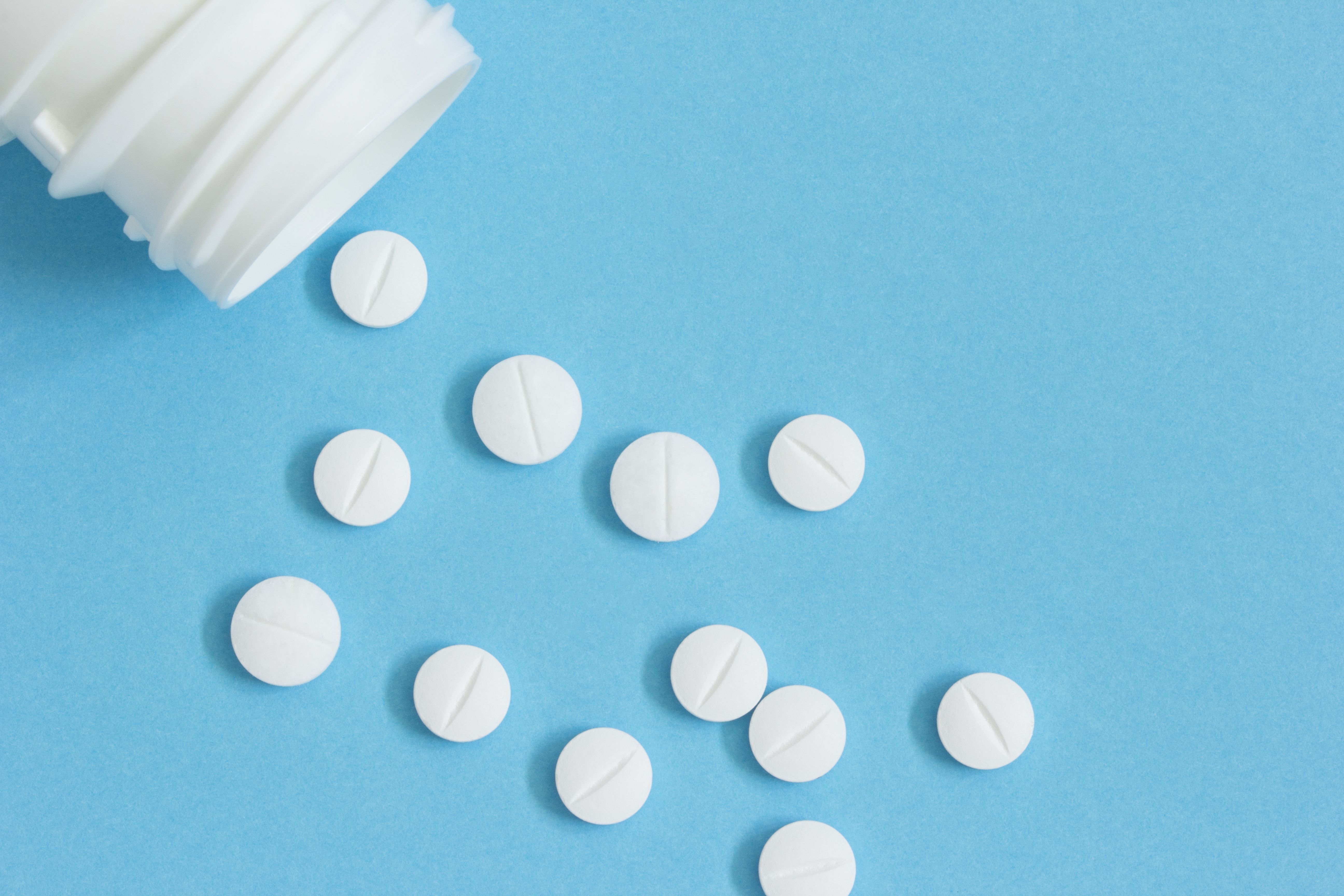Early Aspirin Use Could Lower Mortality, Odds of Stroke in COVID-19
An analysis of data from more than 110k hospitalized patients with COVID-19 suggests aspirin use on the first day of hospitalization was linked to lower odds for both in-hospital mortality and pulmonary embolism in weighted analyses.

Aspirin use during the early days of COVID-19 infection could lower odds of in-hospital mortality, according to the results of a new study.
Published in JAMA Network Open, results of the study, which assessed odds of in-hospital mortality and stroke in more than 100,000 patients hospitalized with COVID-19 based on aspirin use in weighted analyses, suggest aspirin use during the first day of hospitalization with associated with statically significant 15% reduction in odds of in-hospital mortality and 29% reduction in odds of pulmonary embolism.
“In this cohort study of 112,269 patients with moderately severe COVID-19, treatment with early aspirin was associated with significantly lower odds of 28-day in-hospital mortality and pulmonary embolism. Despite the availability of effective vaccines in wealthy nations, COVID-19 continues to cause more than 65,000 deaths per week worldwide, highlighting the need for accessible, inexpensive therapies in those who are not vaccinated,” wrote investigators.
With prior studies suggesting aspirin use may be associated with reduced mortality in hospitalized patients COVID-19, but these studies limited by size or other design flaws, investigators designed the Analysis of National COVID-19 Hospitalization Outcomes in Recipients of Aspirin (ANCHOR) study as a cohort study using data from patients identified using the National Institute of Health’s National COVID Cohort Collaborative (N3C). Through their efforts, investigators hoped to test their hypothesis that early aspirin use would be associated with lower odds of 28-day in-hospital mortality in structural Cox and logistic regression models with inverse probability of treatment weighting (IPTW) to limit bias from confounding.
Using the N3C Data Enclave, which contains data related to 7,930,729 patients from 64 health systems across the US, investigators had access to data from 2,446,850 COVID-19 positive patients enrolled between January 1, 2020, and September 10, 2020. Of these, 189,287 were hospitalized and 112,269 met study inclusion. Patients were excluded from the cohort if they were younger than 18 years of age or if they had severe disease on first day of hospitalization.
The final study cohort had a median age of 63 (IQR, 47-74) years, 16.1% of patients were African American, 3.8% were Asian, 22.4% were of unknown race and ethnicity, 52.7% were White, and 5.0% were of other races. Of the 112,269 individuals included in the study, 15,272 received aspirin in the first day of admission and 96,997 did not. In-hospital mortality occurred among 10.9% of patients included in the study.
Among aspirin users, the median aspirin dose was 81 (IQR, 81-81) mg and the median duration of treatment was 5 (IQR, 2-10) days. Investigators noted patients in the aspirin group had a greater prevalence of CKD, COPD, cardiovascular disease, hypertension, and diabetes prior to IPTW. Additionally, the prevalence of prior aspirin use among the aspirin group was 46.9% compared to just 4.2% among the no aspirin group.
In weighted analyses, receiving aspirin was associated with significantly lower odds of 28-day in-hospital mortality (10.2% vs 11.8%; OR, 0.85 [95% CI, 0.79-0.92]; P <.001). Further analysis suggested the rate of pulmonary embolism, but not deep vein thrombosis, was also significantly lower in patients who received early aspirin compared to those who did not receive early aspirin (1.0% vs 1.4%; OR, 0.71 [95% CI, 0.56-0.90]; P=.004).
Analyses of adverse events indicated no significant increases in odds of gastrointestinal hemorrhage (0.8% aspirin vs 0.7% no aspirin; OR, 1.04 [95% CI, 0.82-1.33]; P=.72), cerebral hemorrhage (0.6% aspirin vs 0.4% no aspirin; OR, 1.32 [95% CI, 0.92-1.88]; P=.13), or blood transfusion (2.7% aspirin vs 2.3% no aspirin; OR, 1.14 [95% CI, 0.99-1.32]; P=.06) based on early use versus nonuse. When using a composite of hemorrhagic complications, results indicated results did not occur more often in those receiving early aspirin (3.7% aspirin vs 3.2% no aspirin; OR, 1.13 [95% CI, 1.00-1.28]; P=.054).
Subgroup analyses suggested greater benefit on risk of in-hospital mortality was observed with early aspirin use for those older than 60 years (61-80 years: OR, 0.79 [95% CI, 0.72-0.87]; P <.001; Greater than 80 years: OR, 0.79 [95% CI, 0.69-0.91]; P <.001) and patients with comorbidities (1 comorbidity: 6.4% vs 9.2%; OR, 0.68 [95% CI, 0.55-0.83]; P <.001; 2 comorbidities: 10.5% vs 12.8%; OR, 0.80 [95% CI, 0.69-0.93]; P=.003; 3 comorbidities: 13.8% vs 17.0%, OR, 0.78; 95% CI, 0.68-0.89; P <.001; More than 3 comorbidities: 17.0% vs 21.6%; OR, 0.74 [95% CI, 0.66-0.84]; P <.001).
“This study suggests that early aspirin use may be associated with lower odds of in-hospital mortality among hospitalized patients with moderate COVID-19; these findings warrant further study in a randomized clinical trial that includes diverse patients with cardiovascular comorbidities,” investigators explained.
This study, “Association of Early Aspirin Use With In-Hospital Mortality in Patients With Moderate COVID-19,” was published in JAMA Network Open.